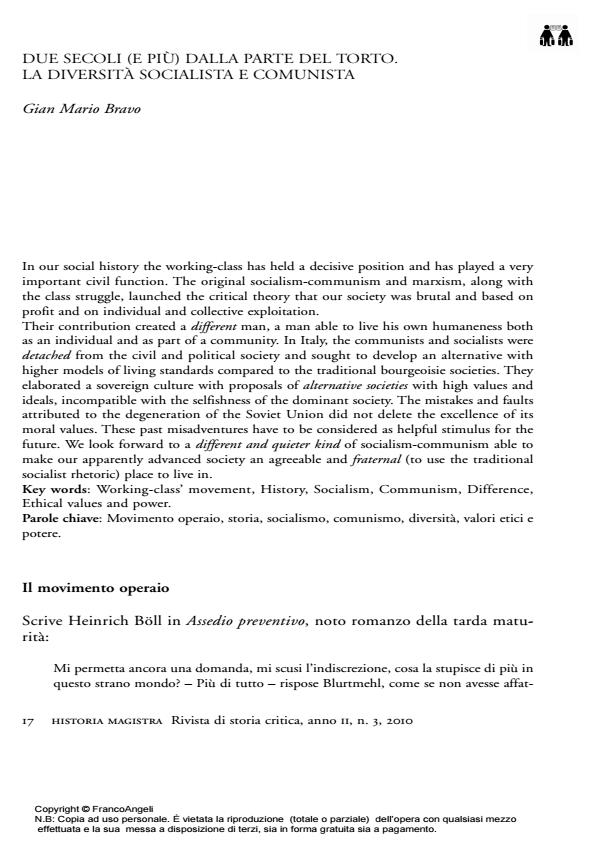Due secoli (e più) dalla parte del torto. La diversità socialista e comunista
Journal title HISTORIA MAGISTRA
Author/s Gian Mario Bravo
Publishing Year 2010 Issue 2010/3
Language Italian Pages 27 P. 17-43 File size 359 KB
DOI 10.3280/HM2010-003003
DOI is like a bar code for intellectual property: to have more infomation
click here
Below, you can see the article first page
If you want to buy this article in PDF format, you can do it, following the instructions to buy download credits

FrancoAngeli is member of Publishers International Linking Association, Inc (PILA), a not-for-profit association which run the CrossRef service enabling links to and from online scholarly content.
In our social history the working-class has held a decisive position and has played a very important civil function. The original socialism-communism and marxism, along with the class struggle, launched the critical theory that our society was brutal and based on profit and on individual and collective exploitation. Their contribution created a different man, a man able to live his own humaneness both as an individual and as part of a community. In Italy, the communists and socialists were detached from the civil and political society and sought to develop an alternative with higher models of living standards compared to the traditional bourgeoisie societies. They elaborated a sovereign culture with proposals of alternative societies with high values and ideals, incompatible with the selfishness of the dominant society. The mistakes and faults attributed to the degeneration of the Soviet Union did not delete the excellence of its moral values. These past misadventures have to be considered as helpful stimulus for the future. We look forward to a different and quieter kind of socialism-communism able to make our apparently advanced society an agreeable and fraternal (to use the traditional socialist rhetoric) place to live in.
Keywords: Working-class’ movement, History, Socialism, Communism, Difference, Ethical values and power.
Gian Mario Bravo, Due secoli (e più) dalla parte del torto. La diversità socialista e comunista in "HISTORIA MAGISTRA" 3/2010, pp 17-43, DOI: 10.3280/HM2010-003003